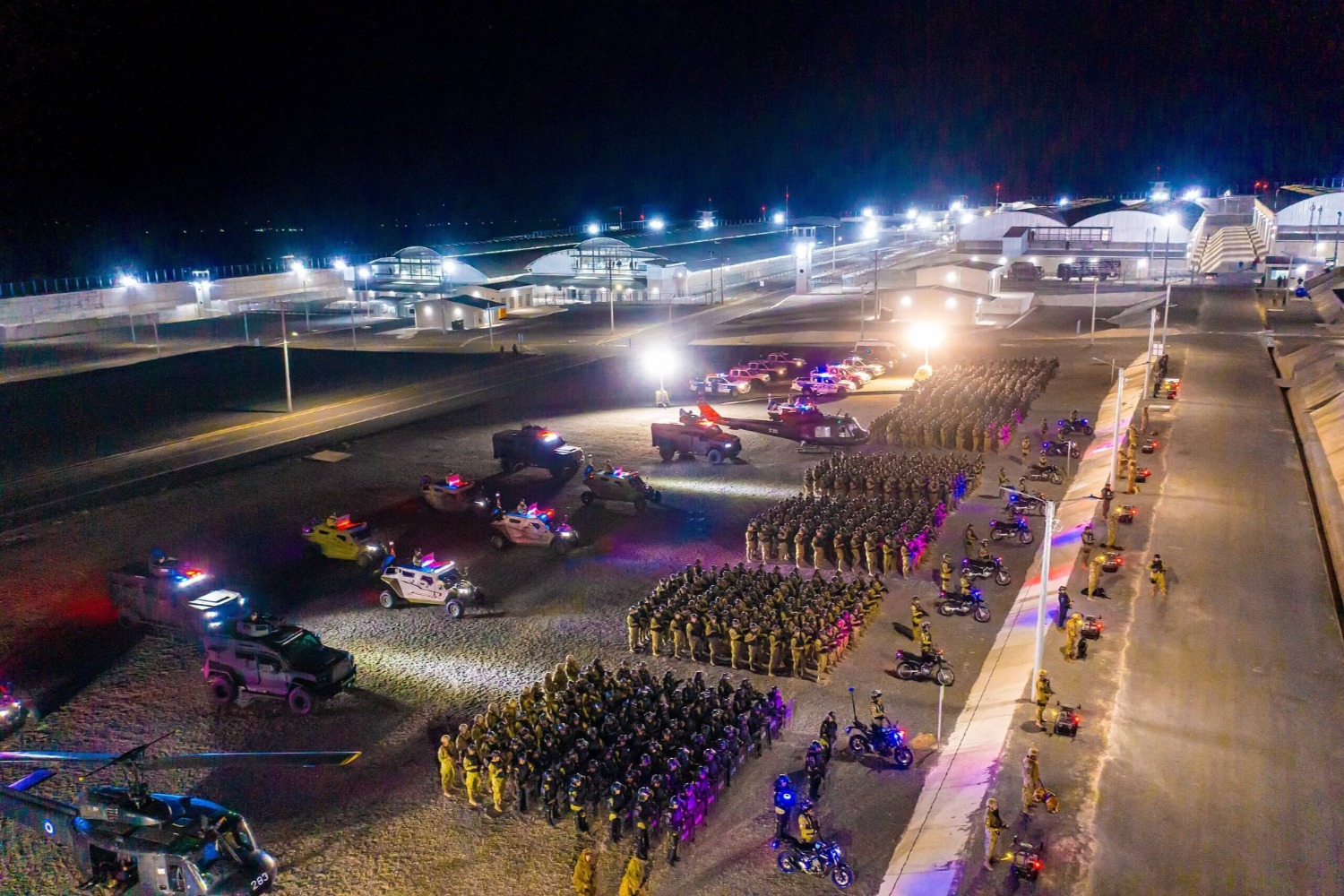Secretary Carter Illuminates the South China Sea FONOP
Secretary of Defense Ash Carter has published a letter to Senate Armed Services Committee Chairman John McCain, in which he offers the clearest and most detailed explanation the Department of Defense has given to date of the recent freedom-of-navigation operation in the South China Sea.
Published by The Lawfare Institute
in Cooperation With

Secretary of Defense Ash Carter has published a letter to Senate Armed Services Committee Chairman John McCain, in which he offers the clearest and most detailed explanation the Department of Defense has given to date of the recent freedom-of-navigation operation in the South China Sea. The letter offers a fulsome response to Senator McCain’s letter of last November requesting additional details on the operation.
Secretary Carter first describes the basic mechanics of the operation, confirming that the Lassen passed by features held by other South China Sea claimants, not just China:
On October 27, 2015, the U.S. Navy destroyer USS Lassen (DDG-82) conducted a FONOP in the South China Sea by transiting inside 12 nautical miles of five maritime features in the Spratly Islands — Subi Reef, Northeast Cay, Southwest Cay, South Reef, and Sandy Cay — which are claimed by China, Taiwan, Vietnam, and the Philippines. No claimants were notified prior to the transit, which is consistent with our normal processes and with international law.
He goes on to make several important clarifying points about the aims of the operation and the Department’s view of the relevant international law. First, the letter reaffirms that the purpose of freedom of navigation operations is to challenge excessive maritime claims, not to take a position on which country is the rightful owner of a given land feature:
The United States does not take a position on which nation has the superior sovereignty claims over each land feature in the Spratly Islands. Thus, the operation did not challenge any country’s claims of sovereignty over land features, as that is not the purpose or function of a FONOP.
Second, the letter confirms that the Lassen operation was conducted consistent with the principle of “innocent passage,” which limits the conduct of foreign vessels in a coastal state’s territorial waters:
The FONOP involved a continuous and expeditious transit that is consistent with both the right of innocent passage, which only applies in a territorial sea, and with the high seas freedom of navigation that applies beyond any territorial sea.
The last clause warrants some discussion. The phrase “and with the high seas freedom of navigation that applies beyond any territorial sea” is not particularly meaningful from a legal perspective. A “consistent and expeditious transit” and compliance with the other limitations in Article 19 of the UN Convention of the Law of the Sea (UNCLOS) are “consistent with … high seas freedom of navigation,” but only innocent passage requires them. Presumably this clause’s intended function is rhetorical; it subtly discourages observers from drawing strong inferences from the fact that the Lassen conducted a “continuous and expeditious transit” rather than lingering or conducting operations.
Third, and most importantly, Secretary Carter’s letter explains why the Lassen’s transit was conducted consistent with the requirements of innocent passage:
With respect to Subi Reef, the claimants have not clarified whether they believe a territorial sea surrounds it, but one thing is clear: under the law of the sea, China’s land reclamation cannot create a legal entitlement to a territorial sea, and does not change our legal ability to navigate near it in this manner. We believe that Subi Reef, before China turned it into an artificial island, was a low-tide elevation and that it therefore cannot generate its own entitlement to a territorial sea. However, if it is located within 12 nautical miles of another geographic feature that is entitled to a territorial sea – as might be the case with Sandy Cay – then the low-water line on Subi Reef could be used as the baseline for measuring Sandy Cay’s territorial sea. In other words, in those circumstances, Subi Reef could be surrounded by a 12-nautical mile-territorial sea despite being submerged at high tide in its natural state. Given the factual uncertainty, we conducted the FONOP in a manner that is lawful under all possible scenarios to preserve U.S. options should the factual ambiguities be resolved, disputes settled, and clarity on maritime claims reached.
Put simply, the United States’ view is that Subi Reef—formerly a “low-tide elevation” completely submerged at high tide—is not on its own entitled to a territorial sea. Under Article 13 of UNCLOS, however, if a low-tide elevation is located within 12 nautical miles of the mainland or another maritime feature entitled to its own territorial sea, the low-tide elevation, and not the coastline, sets the “baseline” at which the 12-nautical-mile territorial sea begins.
According to Carter’s letter, this “might be the case here.” A neighboring feature, Sandy Cay, “might be” entitled to its own territorial sea, and Subi Reef “could be used as the baseline” for measuring that territorial sea. Bonnie Glaser and Peter Dutton had proposed this explanation back in November. But note the many “mights” and “coulds” here. The letter implicitly acknowledges that the operation was conducted in accordance with innocent passage not because it passed through a territorial sea, but because it passed through what might be claimed as a territorial sea.
From a policy perspective, Secretary Carter’s explanation has the advantage of allowing the United States to conduct the operation in a less-provocative manner—innocent passage—without appearing to concede that artificial islands built on low-tide elevations are entitled to territorial seas. Meanwhile, from a legal perspective, this explanation offers a few clues about how the Pentagon plans to structure future freedom of navigation operations in the South China Sea, and the tradeoffs it will face in planning those operations.
First, where there is factual uncertainty about the status of a given land feature, the letter suggests that Pentagon planners will take a maximalist view of that feature’s potential maritime entitlements. As Secretary Carter puts it, the Navy will conduct freedom of navigation operations “in a manner that is lawful under all possible scenarios to preserve US options should the factual ambiguities be resolved.” In other words, this maximalist view of the relevant legal entitlements presumes that territorial disputes in the South China Sea have been resolved and that the United States has acknowledged another state’s sovereignty over each of the relevant features; on that basis, it then affords to those features the maximum maritime entitlements to which they are plausibly entitled under UNCLOS Article 121.
This certainly isn’t the only way FONOP planners could treat the possible maritime entitlements of disputed features—as James Kraska has argued, for example, the United States could plausibly treat disputed features as terra nullius not entitled to any “theoretical” maritime entitlements. But maximalist approach of the Carter letter has the advantage of both preserving U.S. flexibility on the status of these features and providing cover to conduct these operations in a less provocative manner.
That said, if applied consistently, this approach will impose some costs. South China Sea geography is one important limiting factor: There are very few Chinese-occupied land features that don’t fall within 12 nautical miles of something. Working around potential—as opposed to acknowledged—maritime entitlements significantly complicates planning. And deferring to the potential legal entitlements of nearby features also limits the United States’ ability to use freedom of navigation operations to clearly signal to China our view of the status of a given Chinese-held feature.
Still, Secretary Carter’s letter is a welcome and helpful addition to the public discussion of this issue. If anything, the letter’s cautious wording illustrates the extraordinarily delicate task facing the Pentagon as it designs and explains these operations. It must vigorously assert disputed legal rights—and do so without unduly provoking China—and then articulate a coherent legal theory that explains its actions without undermining these policy aims, all while simultaneously preserving future flexibility for U.S. policymakers on the status of disputed features. A tough job, to say the least. Given the challenges facing Pentagon planners, it’s easy to see why a bit of fuzziness might be an attractive way to reconcile competing demands.






